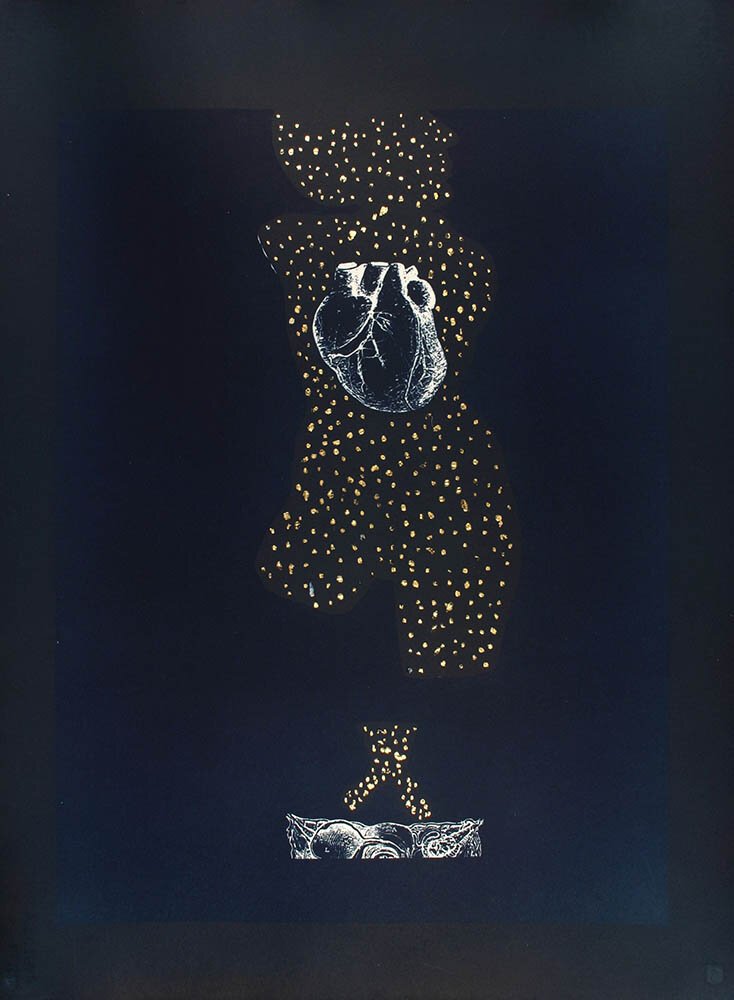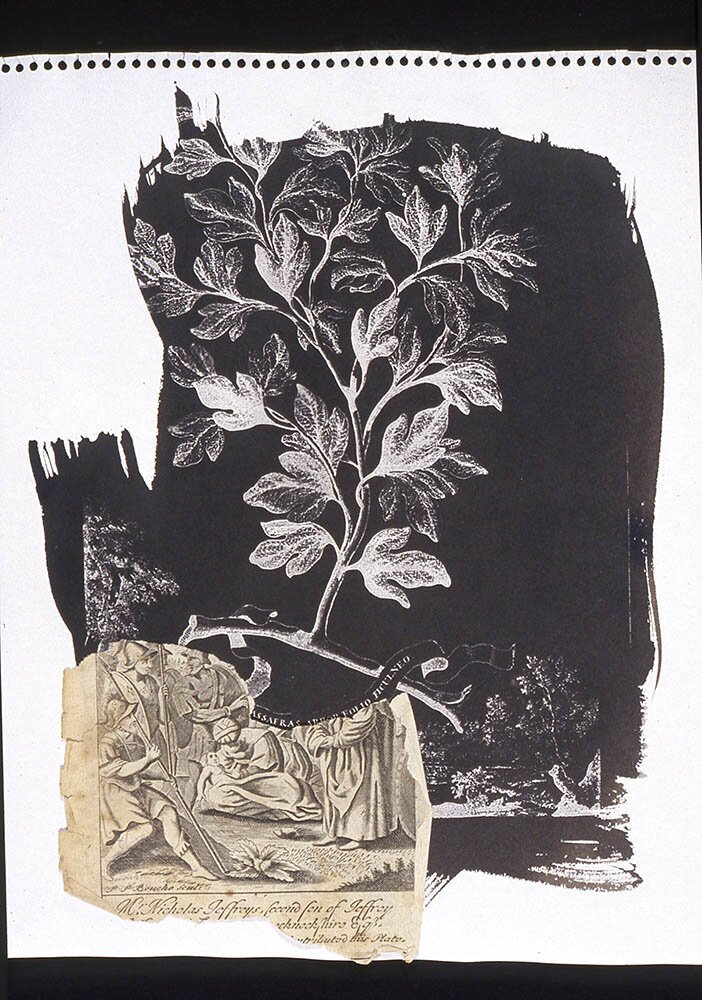Book Review: A Blue Idyll - Cyanotypes and Dreams by Brenton Hamilton
Maine-based historian, artist, and esteemed teacher, Brenton Hamilton’s latest book, A Blue Idyll, released by Schilt Publishing, showcases mastery and imagination across an array of methodologies in nineteenth-century photographic processes. The book’s 112 pages span Hamilton’s 25 years of work in methods including embellished cyanotype, gum bichromate, platinum, collodion ambrotypes on black glass, and variants on French paper calotypes. “For the Eye altering alters all,” a quote by visionary poet William Blake at the start of the book, sets the tone for Hamilton’s imaginative and bewildering visual poetry to follow.
A Blue Idyll - Cyanotypes and Dreams by Brenton Hamilton
Schilt Publishing & Gallery, July 2020
Design: Victor Levie, Amsterdam
Essay by Lyle Rexer, a New York-based independent writer and critic
ISBN: 9789053309414
Format: 24 x 30 cm
Hardback with cloth cover
112 pages with 93 images in full color
Available for purchase here!
Imagine waking from a dream, only to find yourself submerged in the mystery of what it was about. A Blue Idyll calls for such contemplation, as Brenton Hamilton embraces the surrealist influence. Combining chance motifs and interactions from art history, Hamilton creates a new world of unusual connections and possibilities. Cyanotype is an apt process for such otherworldly visualizations in dreamy, deep Prussian blues. The idea of a “dream book” is enforced throughout the book’s sequence of images, as the work presented does not follow any strict chronological order by dates created. This structure enforces the idea of moving through a dream, where linear logic of order is often defied.
Lyle Rexer’s introductory essay offers insightful clues to deciphering the imagery in this world of chance imagery and assembly. He names Hamilton’s influences in history, science, nature, poetry, anatomy, drawing, astronomy, botanical imagery, dreams, and more. Rexer asserts this “isn't really a book of photographs. It's an interior autobiography, with accompanying illustrative images, a dream book if you like.” Of an early work featured, “Wing,” a gelatin silver print, alludes to a fascination with the natural world, a clear motif throughout the book. This image calls to mind photography’s use in scientific study, as a document used for understanding the world by recording details of tiny creatures and structures that cannot be seen with the naked eye.
“The Storyteller”, Cyanotype and Freehand Applied Gum Washes, N.D.
©Brenton Hamilton
“Daydreamer”, Cyanotype and Gum Washes, 2017-1019
©Brenton Hamilton
This visual fragment of an insect is seemingly tame in comparison to many of Hamilton’s compositions to come: fragmented figures, jointed with disparate forms, often in a void of negative space. As the book progresses, color images comprising of watercolor washes over cyanotype lure the viewer further into the dream. Impressionist color palettes in pieces such as “Reaching for a Nightingale” and “Legs in a Garden,” call to mind times of illustrated manuscripts and the pastoral settings of William Blake’s poetry. Hamilton depicts the natural landscape he lives and works, and undoubtedly, esteems, stating: “I make these images with the light of the afternoon sun in the grassy yards of Maine on the banks of the St. George River.”
Many of Hamilton’s compositions are encapsulated and enveloped into a background of deep Prussian blue. In what feels like the crescendo of the book, the viewer is presented with pairings of Hamilton’s embellished cyanotypes. Works such as “Man of Stars,” and “Starlight,” leave the viewer floating in this idyllic blue world, in which the human figure appears to be formed by a celestial body of stars. Here, I imagine the illustriousness of the intricate gold leaf specks, stippled across a night sky. If anything is left to be desired in this book, it is the yearning to see the physicality of these otherworldly prints in the flesh, a shared constraint for any practitioner of the historic processes.
“Cloud Storm”, Cyanotype, 2019
©Brenton Hamilton
“Dreamer”, Cyanotype, 1998
©Brenton Hamilton
Hamilton describes his use of deep spaces surrounding many of his works as “omnipresent symbolism of the dark night sky and the freedom to look outside…toward unfettered ideas and musings.” I am familiar with the vastness of these luminous and deep dark Maine nights Hamilton references, having been fortuitous to gain insights into Hamilton’s laboratory setting at the Maine Media Workshops + Colleges crossing paths many summers ago in this workshop setting. It is clear this monograph embodies Hamilton’s deep connection to the very place he lives and works, a place in which he has honed his dedication to the craft of photography, mentored hundreds of students, and shared his knowledge with the precision and understanding of a scientist.
For the practitioners or admirers of unique one-of-a-kind prints, A Blue Idyll is the ideal model for observing the presentation of the handmade print reproduced in photobook form. This exquisite reproduction demonstrates the high-quality standards of publishing. It is of no surprise that this unique monograph has been shortlisted in the international category for the Best Photography Book Award at PHotoESPAÑA. Like a recurring dream, it is a book that elicits a second look, and invariably, contemplation.
GALLERY
ABOUT THE REVIEWER
Jaime Aelavanthara, Assistant Professor in Photography at the University of Tampa, received her BFA from the University of Mississippi and her MFA from Louisiana Tech University. Her cyanotypes exploring nature and the human condition have been shown nationally and internationally in venues such as the Center for Fine Art Photography, The SOHO Photo Gallery in New York, Seities Gallery, Canada, and the Ogden Museum of Southern Art. Her photographs are recently published in Christina Z Anderson’s book Cyanotype: The Blueprint in Contemporary Practice, Focal Press, 2019.






















Ben Parks' photography blurs the line between fact and fiction, capturing fleeting moments that dissolve into abstraction. Through instant film and converted cameras, he transforms light and color into an ethereal experience, challenging the traditional role of photography as a means of documentation. His work invites viewers into a world that exists only for a second—both surreal and deeply evocative.